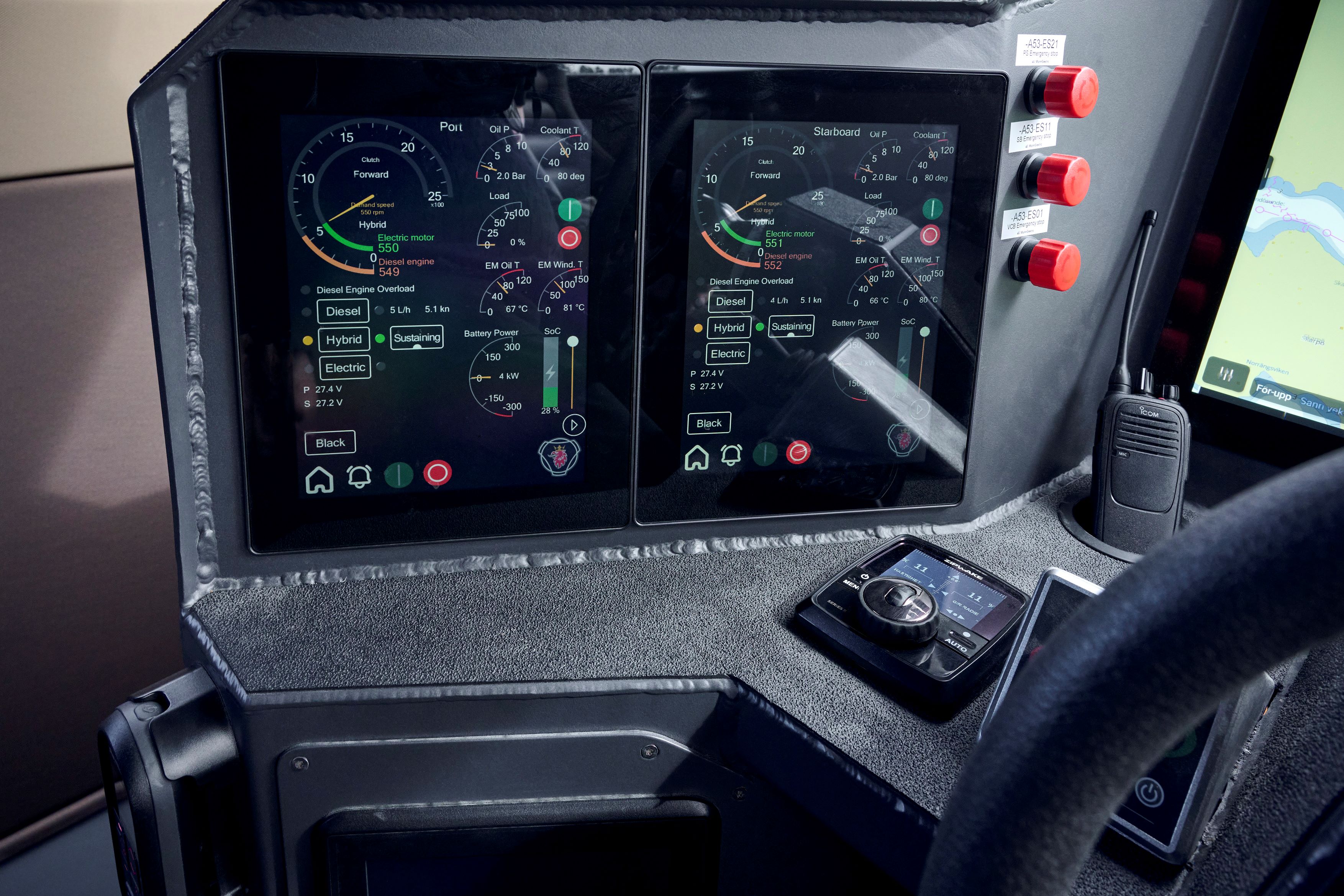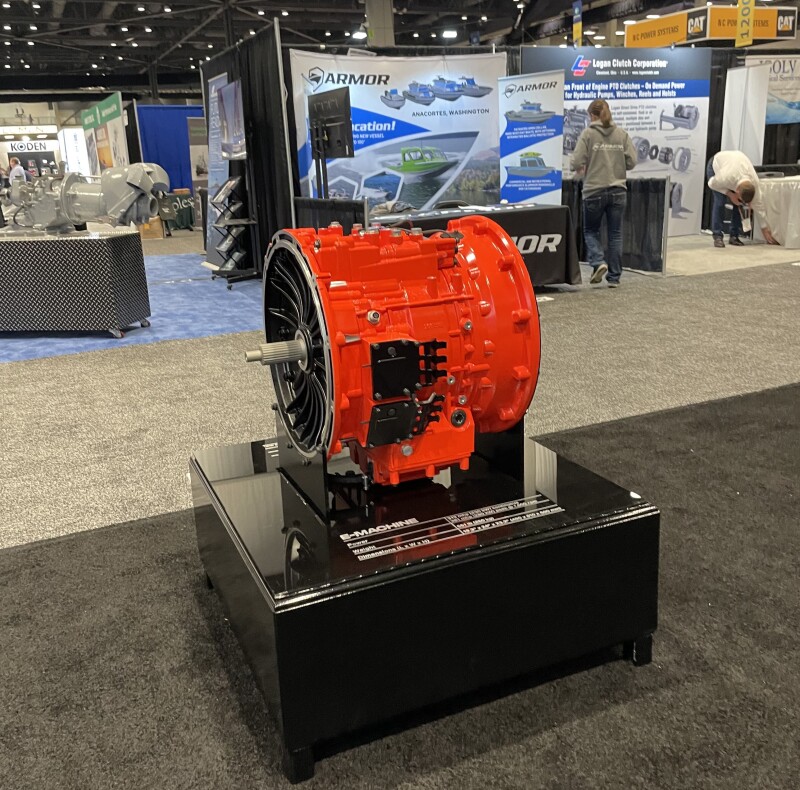Scania Power Solutions showed off the E-Machine, its offering to the diesel/electric hybrid market, at the Pacific Marine Expo in Seattle in 2022. Still, it was more as a conversation starter than for a sale. “We’re still a couple of years away from selling in the U.S., but this is the future of Scania Power Solutions,” says Al Alcalá, senior sales manager at Scania USA. “Scania has been selling this to its truck and bus market in Europe. We decided to bring it to the marine market.”
While the E-Machine sat alone on a pedestal at PME, Scania is selling it as part of a one-stop-shopping modular system that combines the engine, the E-Machine, and the batteries. “We’re the integrator,” says Alcalá. “We make everything, and it’s all controlled by our software.”

According to Alcalá, Scania is planning a rollout in Europe first, then Asia, and then the U.S. “We have a demonstration boat in Europe, a patrol boat with two of our 1150-hp engines, a pair of MJP 350X jets, the E-Machines, and batteries,” Alcalá adds that the U.S. is last on the list of rollouts because the company needs to scale up battery production for what it expects will be a strong market. “We are having the Li-NMC—lithium, nickel, manganese, cobalt—battery cells made to our specs at our joint venture with Northvolt, a company in the north of Sweden,” says Alcalá. “They ship them to the Scania battery factory at our HQ in the south of Sweden, where they get assembled.”
Alcalá notes that if better battery technology becomes available, the company can adopt it quickly. “We are our biggest customers,” he says. We supply all our trucks, buses, and mine haul trucks. Because we are the biggest consumers of our technology and because we are a single-source supplier of these systems, we can make a switch, and it will be supported.”
Scania sees markets for the E-Machine in various marine industry sectors, including commercial fishing vessels that fit a certain operational profile. “The E-Machine remains physically the same size but can vary in power from 150 to 230kW,” says Alcalá. “It has a dog clutch feature that enables a boat to run on diesel only, electric only, or combine both, and the E-Machine can be driven as a motor or as the generator,” says Alcalá. “If the diesel runs at 30 percent load of its duty cycle, the excess load can be used to charge the batteries. Or you can use the electric motor only if you want to operate quietly and reduce wear and tear on the main engine.”
The E-Machine has options, Alcalá points out, including a 15kW inverter and an E-PTO. “The E-PTO can run your hydraulics,” he says. “You can also put as many as two E-Machines in line for additional power.”
The European rollout will happen on September 3rd at the SMM International Maritime Trade Fair in Hamburg, Germany. But Alcalá adds that Scania is ready to start project discussions in the U.S. now and through 2025 so that it can deliver in the 2026 time frame. “Visit Stand A3/303 at the SMM show to learn more about Scania’s E-Machine,” says Alcalá. “Now is a great time to start project discussions for North America.”







